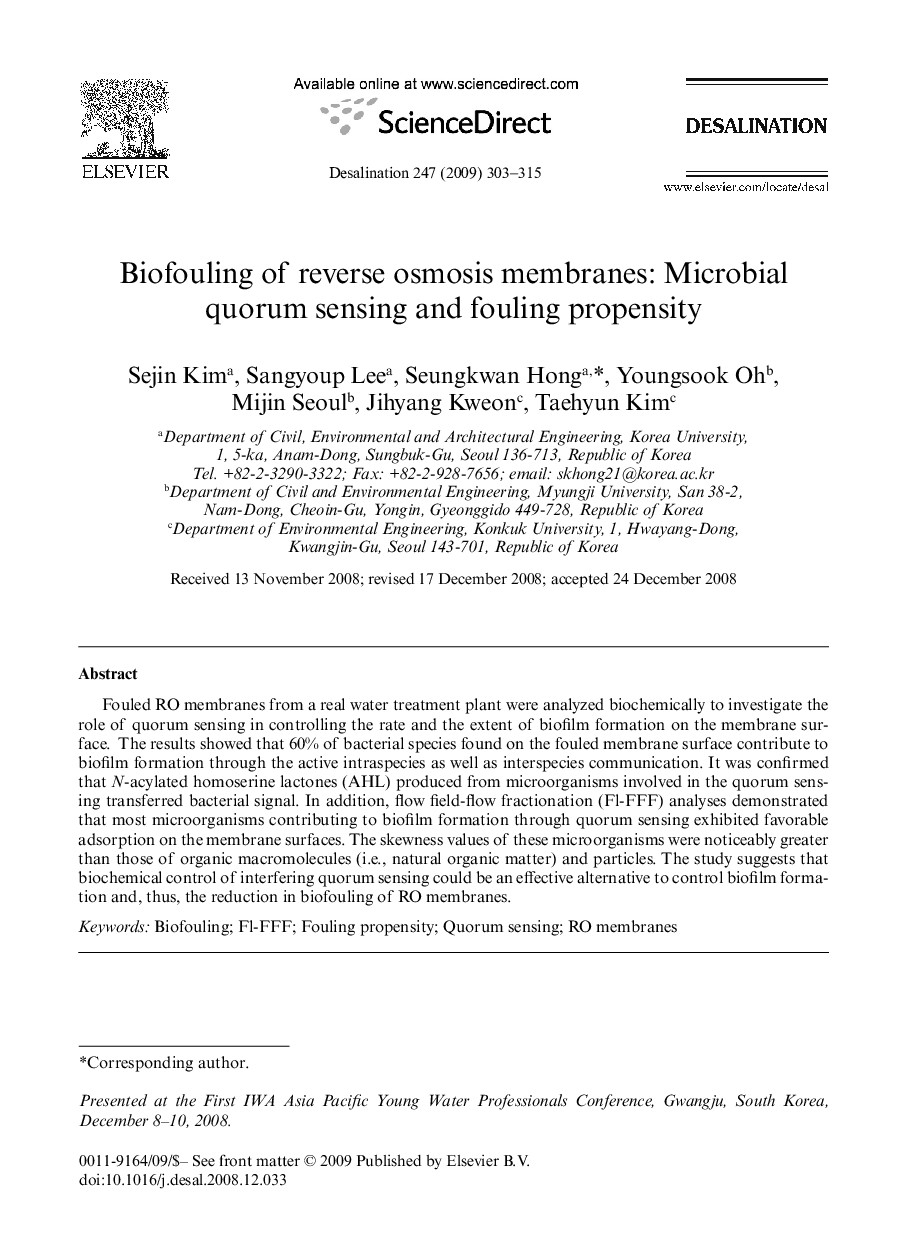| Article ID | Journal | Published Year | Pages | File Type |
|---|---|---|---|---|
| 626542 | Desalination | 2009 | 13 Pages |
Fouled RO membranes from a real water treatment plant were analyzed biochemically to investigate the role of quorum sensing in controlling the rate and the extent of biofilm formation on the membrane surface. The results showed that 60% of bacterial species found on the fouled membrane surface contribute to biofilm formation through the active intraspecies as well as interspecies communication. It was confirmed that N-acylated homoserine lactones (AHL) produced from microorganisms involved in the quorum sensing transferred bacterial signal. In addition, flow field-flow fractionation (Fl-FFF) analyses demonstrated that most microorganisms contributing to biofilm formation through quorum sensing exhibited favorable adsorption on the membrane surfaces. The skewness values of these microorganisms were noticeably greater than those of organic macromolecules (i.e., natural organic matter) and particles. The study suggests that biochemical control of interfering quorum sensing could be an effective alternative to control biofilm formation and, thus, the reduction in biofouling of RO membranes.
